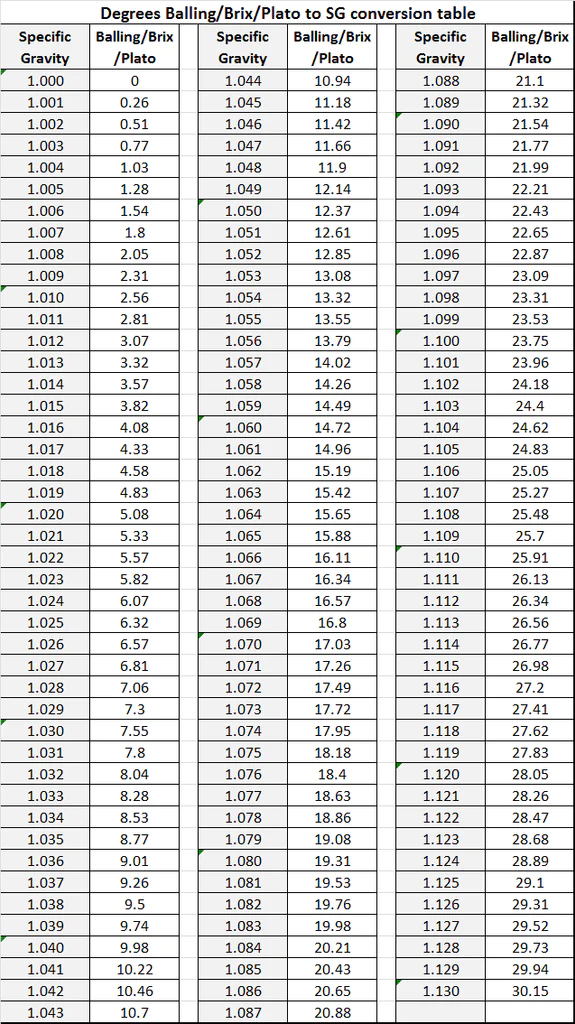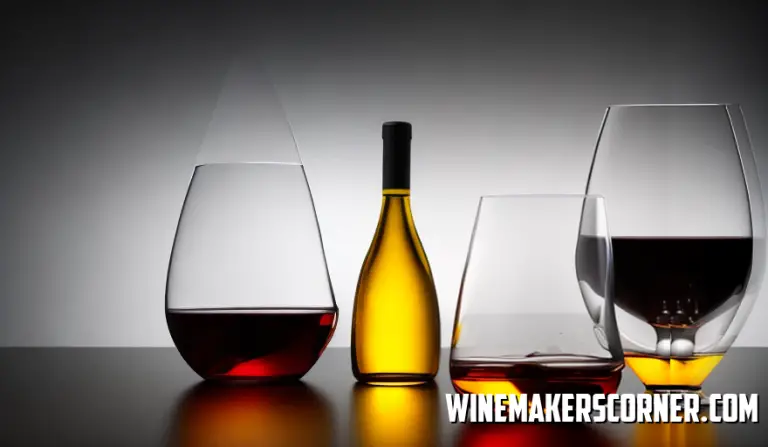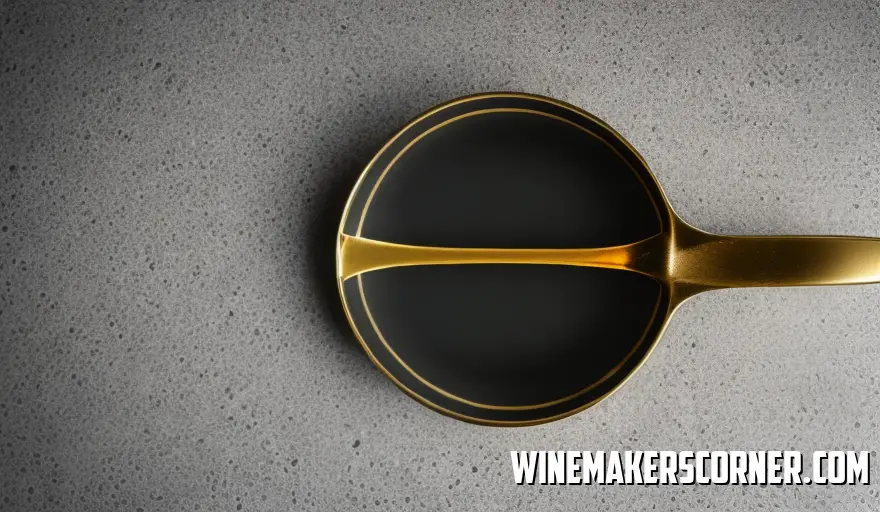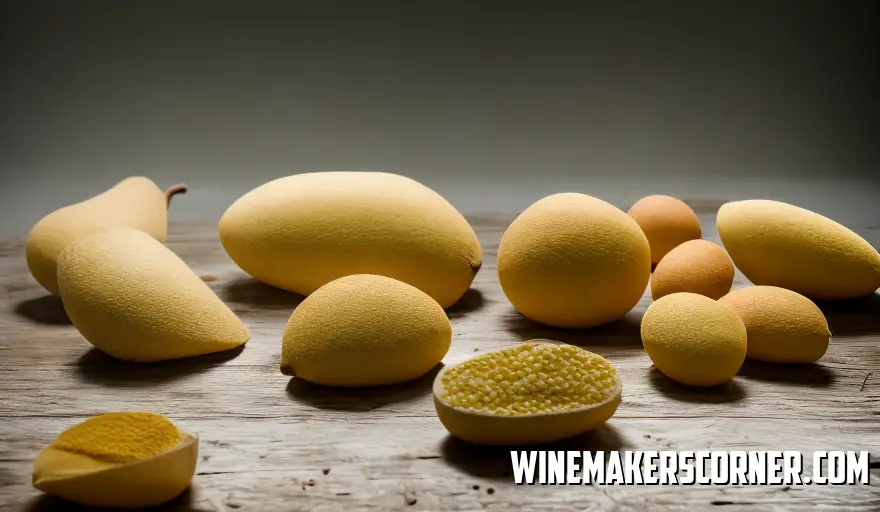For oenophiles discovering new wines is like embarking on a magical journey. However, did you know that Specific Gravity (SG) plays a vital role in achieving the perfect pour? Although oft-overlooked, understanding SG can make all the difference in unlocking the potential of your favorite bottles.
With our Ultimate Wine SG Chart, unraveling this enigmatic component will be easy peasy! Prepare for an exciting expedition into viniculture – where science meets artistry, and every sip is pure bliss!

Ideal Specific Gravity for Various Wine Styles
Winemaking is an intricate world filled with complexities that leave enthusiasts continually learning and evolving their knowledge base. Amongst these complexities lies one major factor – specific gravity (SG). This vital metric sheds light on finding the perfect balance between sugar and alcohol for various wine styles allowing you to discover your favorite vintages’ ideal profile. To begin with, what exactly is specific gravity?
It measures liquid density compared to water density. When it comes to winemaking, this factor indicates the sugar concentration within grape juice or must that ultimately impacts alcohol levels in the finished product. Monitoring SG enables winemakers to fine-tune their creations to attain sought-after traits as fermentation progresses. Next up – different styles and associated ideal SG ranges:
- Light-bodied whites: These wines are esteemed for being refreshing with crisp acidity and subtle fruit flavors making a lower SG range (around 1.085 1.095) an excellent starting point. This range allows for an alcohol content of around 11 12%, which complements their delicate character.
White wine lovers who desire richer texture and more intense flavors should choose full-bodied white wine varieties over lighter options. Winemakers achieve this by starting with an SG of approximately 1.095 1.105, which results in an alcohol content ranging between about 12% and 14%.
If you’re more interested in red wine varieties but don’t want anything too heavy, light to medium-bodied options, showcase fruity aromas and gentle tannins that make them easier to drink overall.
Winemakers start the fermentation process at around an initial SG between roughly 1.090 and 10, producing alcohol content ranging from 12%-14%. On the other hand, those who prefer bold flavors will be drawn towards full-bodied red wines that showcase intense fruit, spice, and oak notes thanks to elevated starting SGs of about 1.100 1.110, which produce higher alcohol levels ranging from about 13%-15%. Lastly, dessert wine enthusiasts have plenty of options to choose from! High residual sugar levels result in sweeter wines that make perfect after-dinner treats, featuring a higher initial SG of roughly 1.120 1.140.
The concentration of alcohol in wine differs among styles but typically falls between 10% to 20%. Ultimately, comprehending the optimal specific gravity for various types enhances appreciation for this classic beverage.
With awareness of how SG influences a bottle’s properties comes better decision-making when purchasing wines that match one’s taste palate or exploring winemaking as a craft oneself! Cheers!
The Science Behind Specific Gravity
The role of specific gravity (SG) in winemaking should not be underestimated – it’s one measure responsible for defining the character and overall quality of your favorite vintages. As a comparison between the density of wine and water, SG is something that every wine enthusiast pays close attention to. The intriguing science behind this measure starts with grape juice rich in sugar content. During fermentation, as yeast consumes these sugars, turning them into alcohol, and carbon dioxide, changes occur in the wine’s specific gravity value. Winemakers monitor SG throughout every fermentation stage as it helps them perfect their craft by ensuring precision while producing high-quality wines.
Early during the process, when sugar levels are high, there’ll be increased SG values, which will decrease gradually as alcohol increases & sugars deplete.
Different wine styles maintain unique SG ranges – Sweet dessert wines possess higher values due to residual sugar content, In contrast, dry reds or whites exhibit lower values because they’re less sweet. Ultimately attaining an ideal specific gravity value produces a balanced wine where sweetness & acidity levels blend perfectly. In conclusion, enjoying your preferred wines requires comprehending particular gravity.
This is a critical element that defines the unique character of every wine. With this understanding, you can easily distinguish superior wines from average ones!
Measuring Specific Gravity Accurately
The quality of wine depends on many factors, including measuring specific gravity accurately. Specific gravity indicates a wine’s density compared to water and helps winemakers monitor fermentation progress, forecast alcohol levels, and achieve desired flavor and aroma balances. Precision is crucial while measuring specific gravity levels, making it necessary to consider several factors. Temperature fluctuations can significantly impact readings; hence, maintaining a stable environment during measurements by storing wines in cool cellars or temperature-controlled rooms is essential.
Hydrometers and refractometers are commonly used to determine specific gravity levels in wine production. Hydrometers are relatively easy to use but require careful calibration before taking any readings for accurate results. Refractometers offer another option as they measure light refraction through liquids providing precise SG readings without the need for large samples or temperature concerns.
Regardless of which instrument is used, consistency is crucial when measuring specific gravity levels at different stages of wine production. Consistent practices lead to reliable data collection, helping winemakers quickly perfect their vintages. No two wines are created equal – that is evident when considering how many factors go into crafting each bottle.
But even within individual varieties, some nuances can significantly impact how a wine tastes and feels in your mouth. That’s where understanding specific gravity comes into play. By measuring SG accurately and consistently throughout production using tools like hydrometers or refractometers, winemakers can unlock the full potential of their creations.
For novice enthusiasts and seasoned connoisseurs alike, this attention to detail yields incomparable flavor profiles that will leave a lasting impression.
How Fermentation Affects Specific Gravity
Grape juice transforms into wine through fermentation, a magical process affecting specific gravity (SG). Winemakers must keep track of SG because it directly impacts the quality and characteristics of their vintages.
So how does fermentation influence SG exactly? Well, grape juice is initially full of sugar which causes it to have a high SG value.
However, as the yeast converts sugar into alcohol over time, the SG level drops. This change is crucial in preventing overly sweet and undesirable wines.
Temperature is another factor at play during fermentation that influences SG.
Higher temperatures increase the speed of sugar conversion into alcohol, leading to robust flavors and higher alcohol content, while cooler temperature yields more delicate wines with lower alcoholic levels.
Accurate monitoring of specific gravity throughout fermentation is essential to winemaking since it helps winemakers make informed decisions at every stage. To achieve desirable wine properties, winemakers must exercise careful judgment throughout each fermentation stage. They may halt the process early and preserve some sweetness or permit complete consumption of all sugars to attain an austere flavor profile in their wines.
Accurately interpreting how this affects specific gravity is essential for creating high-quality wines with optimal attributes. By continuously monitoring these developments, winemakers can improve their methodology and deliver memorable vintages that cater perfectly to diverse global tastes.
Adjusting Your Wine’s SG During Winemaking
Winemaking is an art that revolves around precision, one crucial element being specific gravity (SG). Achieving the desired taste, aroma, and quality of your favorite vintage requires careful consideration of this aspect – but what exactly is it? More importantly: why does it matter? Let’s take a closer look. In winemaking terminology, specific gravity refers to the density measurement of grape juice or must regarding its sugar content. During fermentation – where yeast converts sugar into alcohol – there is a decrease in SG values over time; monitoring these changes allows for better control over fermentation, resulting in enhanced wine quality overall.
Adjusting your wine’s SG levels can be achieved by having an understanding of what outcome you desire from the final product; different types require various ranges while fermenting depending on their intended sweetness level; dessert wines will typically have higher starting values than dry table wines during this process – red wines usually range between 1.090 and 1.110 while whites range from 1.080 to 1.100.
To achieve your preferred taste profile of sweetness or dryness in wine production, it is essential that adjusting starting SG occurs. The question then arises: how can this be done? Be assured that it is much simpler than one might assume! If one wishes to increase sugar content (and therefore raise initial specific gravity), they should dissolve sugar into the water before adding it to their must or juice; such a mixture is called chaptalization. On the other hand, if there is a need for lowering initial specific gravity- due perhaps too overly ripe grapes- diluting juices with water will suffice! Nonetheless, remember not to add excess water, which can negatively impact flavor profiles.
Ultimately: do not ignore SG during winemaking! Diligent observation and modification are integral to crafting exquisite vintages tailored to your taste preferences. Thus when you take a sip of impeccably harmonious wine again, remember that it’s more than just a moment of hedonism; instead, it’s where science comes alive!
Factors Influencing Final SG in Wines
Wine production involves finding a perfect balance between science and artistry so that each batch offers quality characteristics by considering Specific Gravity readings comprehensively. Many factors influence this measure leading to different taste experiences, which can be identified through aroma or mouthfeel sensation felt while sipping on glasses. In this article, let’s explore these underlying elements offering insights into how best to establish the optimal Specific Gravity necessary for any preferred varietals.
It is paramount that grape selection gets factored in by considering varying sugar levels due to inherent acidity differences observed across different types available, leading to increased readings during fermenting times necessary for achieving desired winemaking outcomes.
Notably, Terroir significantly affects grape development through unique combinations of climate, soil composition, and topography resulting in sugar accumulation within grapes leading to variations in Specific Gravity readings obtained during wine production.
Lastly, fermentation techniques require a systematic approach considering their impact on flavor profiles alongside scent character. Additionally, it’s essential to monitor SG values using appropriate instrumental probes during this process.
Grapes are transformed into alcohol through fermentation facilitated by yeast activity. Wine producers have control over altering alcohol levels and influencing the final SG value by regulating fermentation temperature and choosing specific yeast strains. These winemakers may combine various types of grapes from different years to create intricate tastes with desirable attributes such as sweetness or body that significantly affect the wine’s SG value.
Finally, aging is another critical factor that shapes a wine’s final specific gravity value, as gradual chemical transformations occur within oak barrels/bottles that result in variations in density/viscosity. Therefore understanding how grape variety and terroir characteristics impact SG values is paramount to the informed wine drinker in choosing their favorite vintages.
Troubleshooting Common SG Issues
For wine enthusiasts and winemakers alike, maintaining the perfect specific gravity (SG) is essential for obtaining the desired flavor profile in their vintages. This section focuses on various prevalent SG problems and provides practical solutions for addressing them efficiently. Firstly low SG readings caused by insufficient sugar levels in must or juice can significantly impact the alcohol content and taste of your wine.
To resolve this issue efficiently, consider adding sugar or concentrated grape juice to increase initial gravity levels. High SG readings are another common concern that often results in overly sweet wines with unbalanced flavors due to excessive sugar content. If this happens, dilution with water or blending with a lower SG wine helps correct it.
Fermentation stalls are another challenge winemakers confront when yeast activity slows down before achieving their desired final gravity due to nutrient deficiencies,*temperature fluctuations,*or high levels of alcohol inhibiting yeast growth.* Revving up your fermentation could mean experimenting with either yeast nutrients or trying out new strains engineered explicitly for greater alcohol tolerance. While investigating these options further, remember that having an accurately calibrated hydrometer is necessary for measuring specific gravity correctly – which is only possible when taking temperatures into account. Specifically, addressing common concerns related to particular gravity will enable you to produce perfectly balanced and flavorful wines.
From detecting anomalies like stuck fermentations and abnormal readings – all the way down to ensuring precise measurement techniques – developing awareness around these potential pitfalls will result in more successful vintages overall.




